
As electric mobility gains prominence across the world, charging an electric vehicle (EV) is becoming an everyday activity for many households.
However, while charging an EV at home offers great flexibility and convenience, it is a lot different from refueling a gas-powered car at the pump and –like any new experience– can be daunting at first.
In this article, we'll guide you through every step of the charging process at home so that you can charge with confidence.
If you don't want to read the entire article, you can click on the links below to jump straight to the charging tutorials.
.jpg?width=7952&name=shutterstock_1913988745%20(2).jpg)
how do you charge an electric car at home?
At a fundamental level, charging an EV works much the same way as any electronic device with a battery – an EV needs to be plugged into a power source from which it can draw electricity to recharge its battery.
The simplest way to charge an EV is to plug it into a standard wall outlet: this does not require any special equipment aside from a charging cable that is typically included with the car. However, this is the slowest way to charge and only adds about 4 miles of range every hour. It is also the least safe as there is no protection from your charger overloading your home’s electrical circuit and causing damage to your network.
A safer, faster, and more convenient alternative is a dedicated home charger.
The principle remains the same, except that a charging station is installed by an electrician and can handle greater loads of charging an EV. As such, it can deliver much higher power and achieve faster charging speeds than a home outlet.
While using a dedicated home charging station is about 3 to 7 times faster than charging it with your regular outlet, charging on the go at level 3 DC fast charging stations is even faster. Some of these rapid chargers can charge up your car in as little as 15 minutes (depending on the charger’s power output and your car’s battery).
However, getting this type of speed at your home is simply not possible, as your home’s electrical supply cannot deliver the high power required for level 3 fast charging.
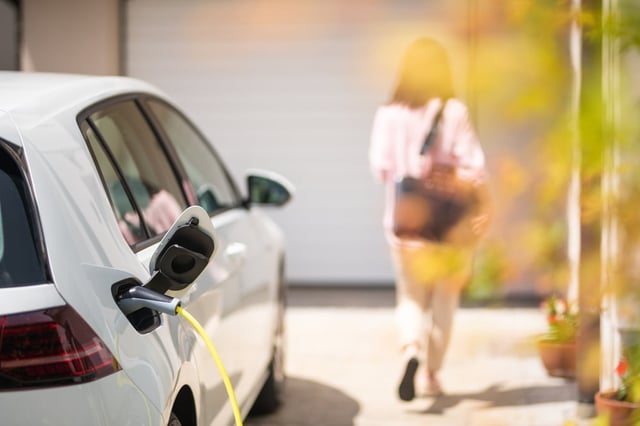
Why should I charge my electric car at home?
Charging at home is the preferred way to charge for 64 percent of EV drivers, and it’s easy to understand why.
For one, charging at home is the most convenient: instead of having to go out of your way to find a public charger, you can simply plug your car in whenever you come home from work and charge it while you're not using it.
Charging at home is also usually cheaper than charging publicly, as you avoid the additional fees that public charging operators add for offering the service.
There is no doubt about it, home charging is one of the most convenient ways to charge your EV.
Do I need to buy a home EV charging station?
You may be asking yourself, then, do I need to buy a charging station to charge my car at home?
In a nutshell, the answer is no, but there are some things to consider.
While you can charge your car by simply plugging it into a power socket at home, the safety, speed, and convenience of a home charger are worth considering.
So, while purchasing and installing a charging station has a price tag, this expense might be well worth it for its efficiency and simplicity for everyday usage.
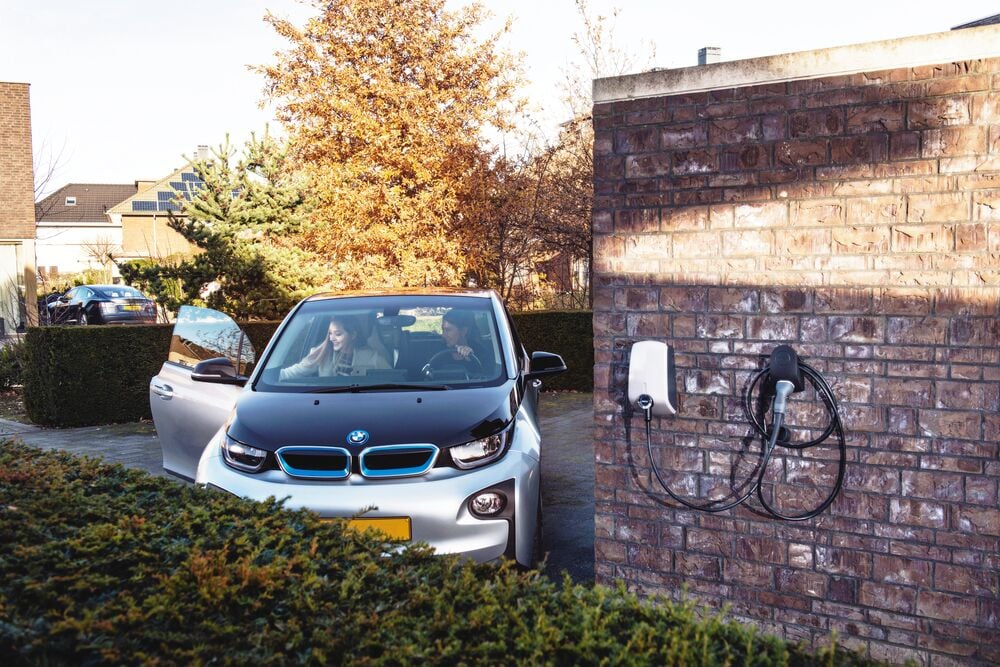
Still, there may be situations where you can’t install a home charger, either because of a lack of room, no adequate wiring set-up around your parking space, or not having a parking spot to begin with.
This doesn't mean you can't get an electric car though, as there are many options to charge it elsewhere.
Charging at home without an EV home charging station
Charging your EV at home without a charging station is as simple as plugging the cable that came with your car into a standard socket.
However, this way of charging tends to be extremely slow and offers no protection against potentially dangerous power overloads.
To give you an overview of charging speed, a standard 2.3 kW home power outlet would take about 24 hours to charge up a medium EV with a 50 kWh battery (such as a Tesla Model 3 Standard Range) to 80 percent.
On top of that, given that EV charging is a highly energy-intensive activity, it can easily overwhelm your home’s electrical circuit if not managed properly
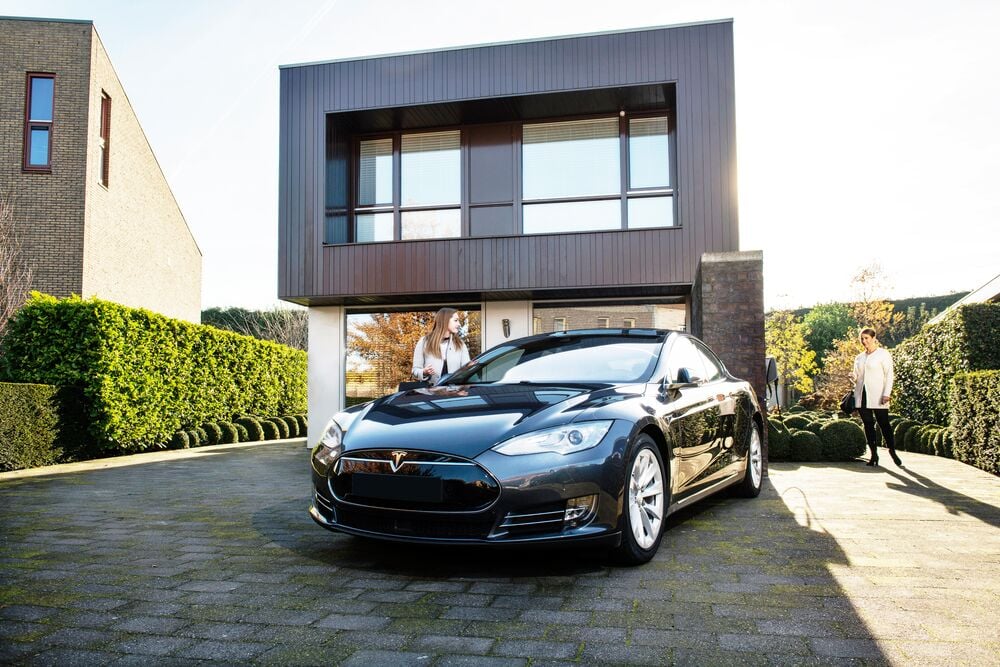
Charging your car without a charging station can put your home’s energy supply under strain and, if you're not careful, even pose a fire hazard.
Charging at home with an EV home charging station
Home charging stations are specifically designed to handle energy-intensive loads and offer more control.
Having a home EV charging station unlocks much greater power and charging speed. On average, it would take a dedicated EV home charger between 3 and 7 hours to charge a medium EV.
This is a noticeable difference. Even a “slow” home charging station is likely to charge your EV overnight, whereas charging via the standard socket will at least take 3 times longer.
The 5 steps to charge an electric car at home
While the specifics can vary between charging stations, brands, and even car models, it generally requires the following steps:
- Getting the charging cable
- Plugging the cable into the car
- Plugging the cable into the home charging station
- Starting the charging session
- Ending the charging session
1. Get the charging cable
Once you have parked your car, the charging cable is the first thing to look for. While many home charging stations have a built-in cable, others may require you to plug in your own.
In those cases, you can typically use the charging cable your EV’s manufacturer provided (It's usually stored in your car’s trunk).
Good-to-know side note: cables and connectors change depending on where you live.
2. Plug the cable into the car
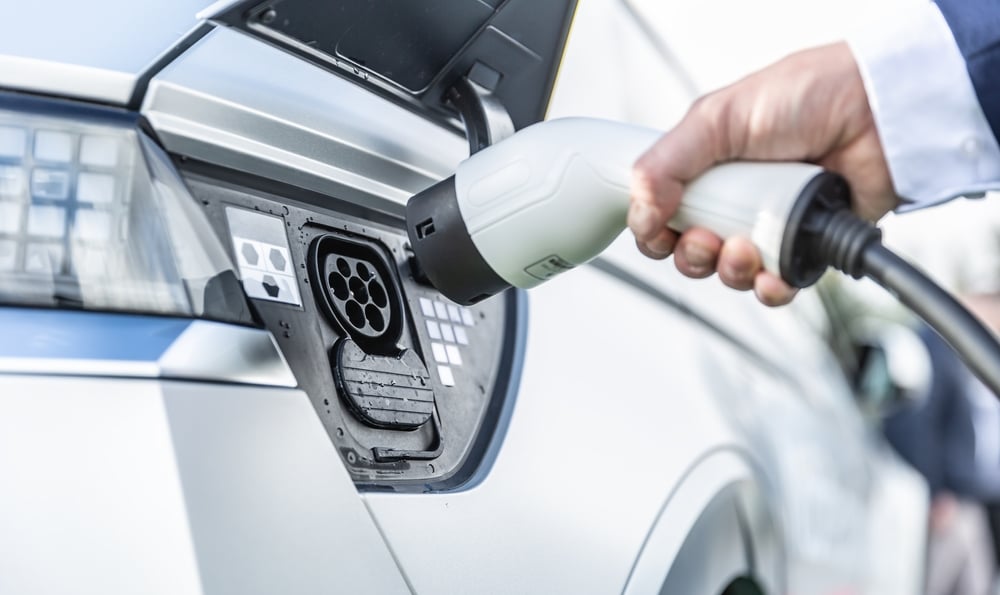
The next step is to connect your car to the charger with the cable.
For this, you need to locate your car’s power socket – this is often found in the same place where a fuel cap for a gas-powered vehicle would be, in other words, on either side.
Some manufacturers place the charging port in other places, such as under the badge next to the front trunk.
3. Plug the cable into the home charging station
If the cable is not already attached to the charging station, the next step is to plug the cable into the charger. Generally, the socket on the charging station will be readily visible, although you might need to lift a protection cap before you can plug the cable in.
4. Start the charging session
Once you have connected the car to the charging station, the next step is to start the charging session.
Broadly speaking, this can take two forms, depending on whether your charging station is open or closed.
With an open station, charging starts as soon as the cable is connected, and no authentication is required. This is the case for many home chargers in private driveways or garages that are not publicly accessible.
In the case of a closed charging station, the user is required to authenticate themselves, typically using an RFID card or fob, or through a charging app.
Once the station recognizes the user and authorizes the process, the charging session will start.

Usually, once the charging session has started, colored LEDs on the charging station will change color or flash in a given pattern.
5. End the charging session
When your car is charged to the desired level, it’s time to end the charging session.
During the charging session, the connector is typically locked to the vehicle. This is a safety measure to prevent theft or being on the receiving end of high voltage. So, to disconnect the cable, you'll first need to end the charging session.
Just like starting it, this is done either through an app or by swiping your RFID fob or card.
Once the charging stops, the colored LEDs will change (or stop blinking).
The last thing to do is unplug the cable from the car and return it to the charging station (if it is built-in) or, in the case of detachable cables, unplug it from both the vehicle and charger and return it to your car.
You are now charged and ready to hit the road again!
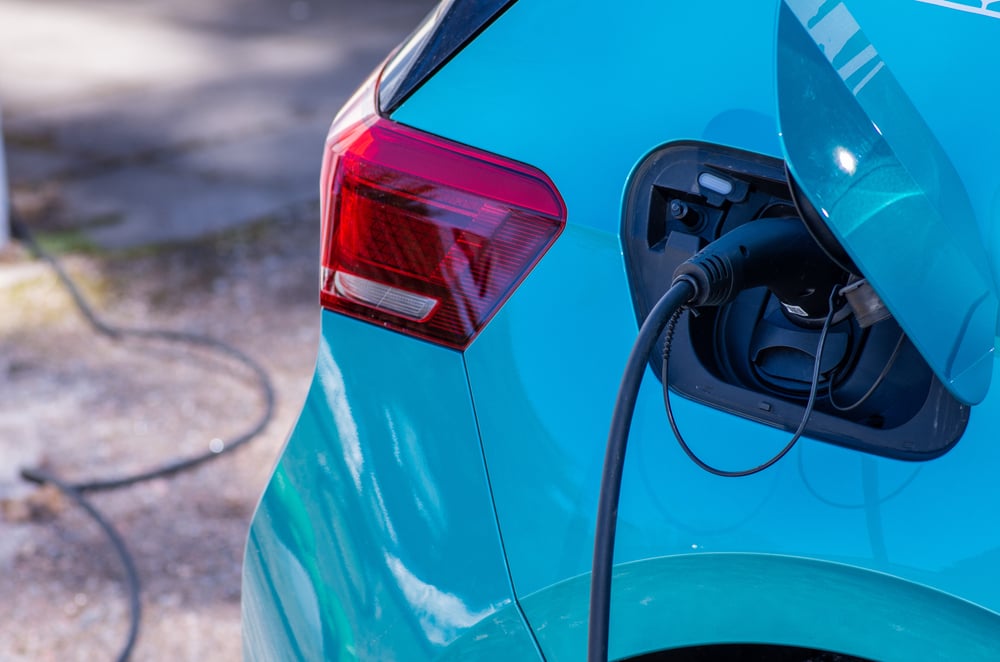
While charging at home is by no means rocket science, it can be unfamiliar for many new EV drivers, so we hope the steps above provide a helpful overview.
If you’re considering switching to electric mobility, you probably have a lot more questions about EV charging, have a look at our detailed EV charging guide for a complete overview of everything EV charging for new EV drivers.